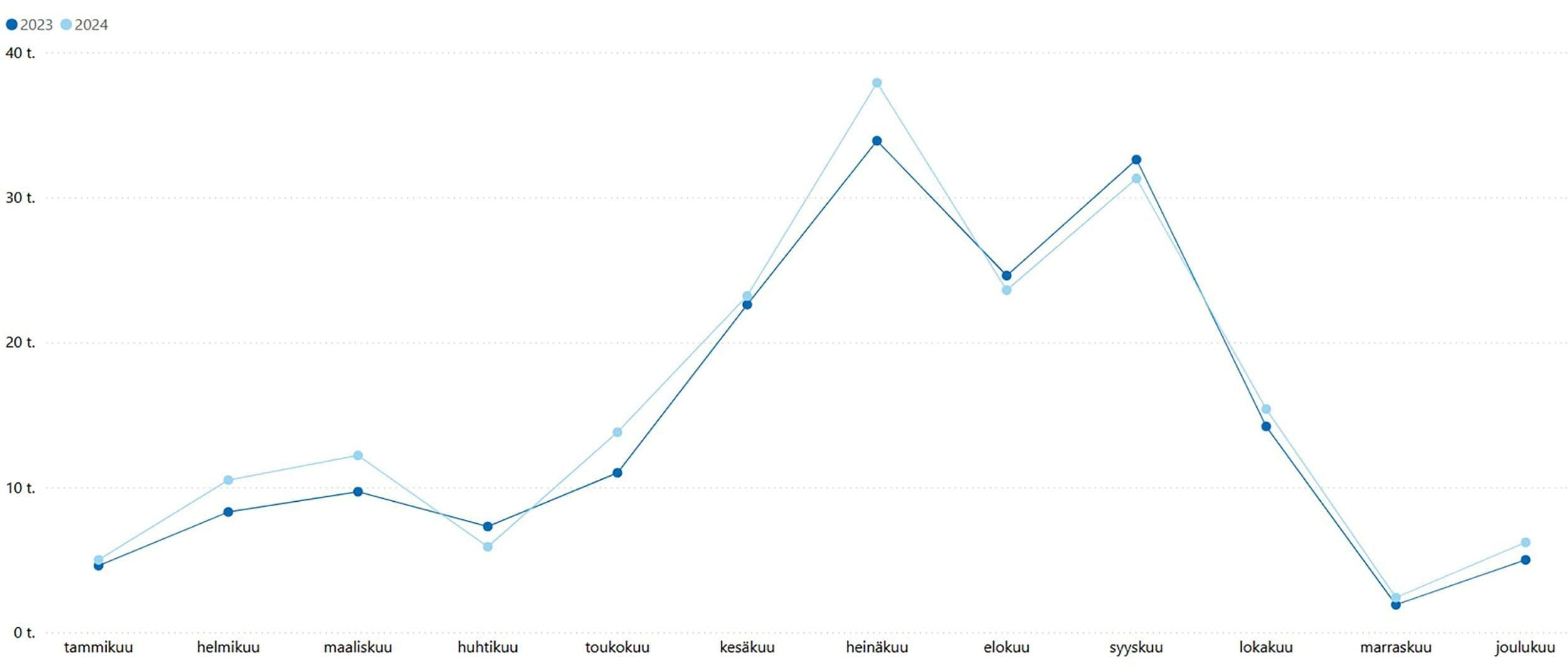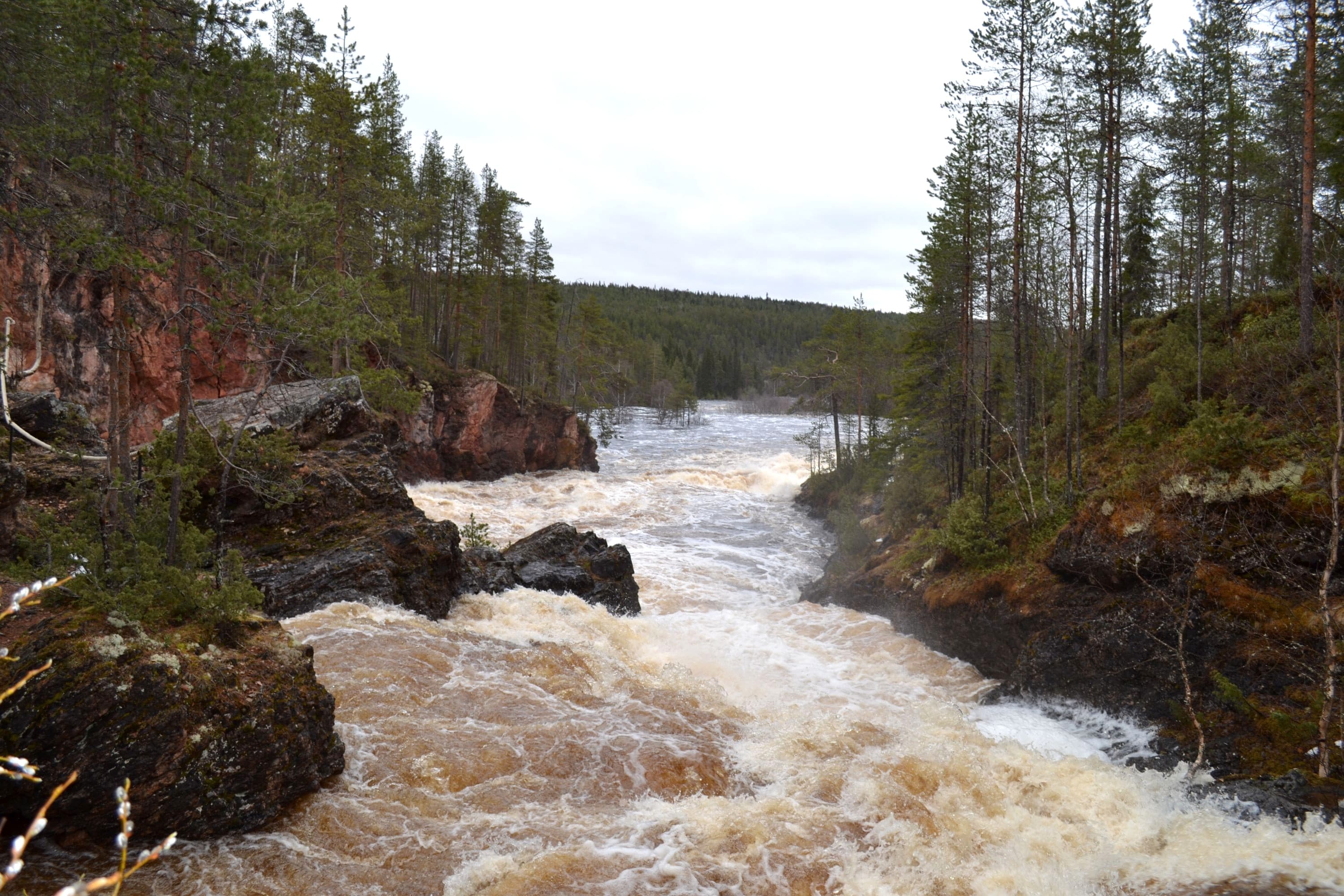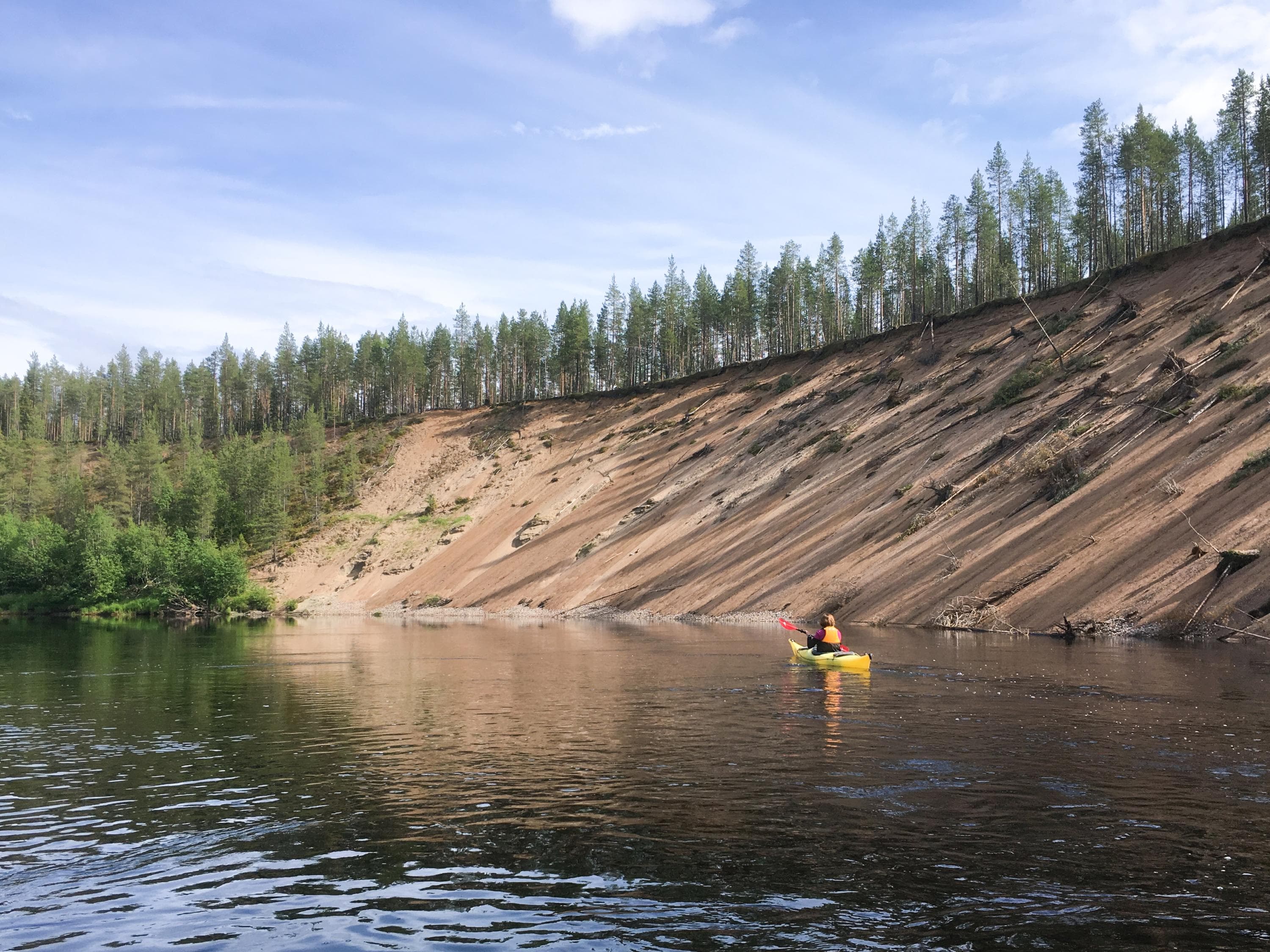In 2024, Oulanka received about 190,000 visits, making it Finland’s sixth most visited national park.

Spring (April–May)
Why visit:
The spring floods of the Oulankajoki River are a magnificent sight. Kiutaköngäs, located in the heart of the park, is easily accessible even in spring, when floods block access to many other parts of the park. The flood peak at Kiutaköngäs usually occurs between mid- and late May. The beautiful and endangered orchid fairy slipper or Venus's slipper (Calypso bulbosa) blooms from late May to mid-June as the snow melts.
Crowds:
Spring is generally a quiet time in Oulanka, and you don’t need to worry about crowds. Weekends are busier than weekdays. The annual Karhunkierros NUTS trail running event takes place at the end of May, filling many of Oulanka’s trails with runners.
Weather conditions:
Spring is flood season, and the worst thaw period occurs from early April to late May. Due to flooding and muddy terrain, many trails are inaccessible. The Karhunkierros Trail, for example, is cut off, and hikers should wait until late May. Depending on the snow conditions, the Pieni Karhunkierros Trail may already be passable in spring, since the Kitkajoki River doesn’t flood as much as the Oulankajoki, but the trail remains wet and icy.

Summer (June–August)
Why visit:
Oulanka’s trails and diverse nature are easiest to access in summer. The variety of routes suits both day trips and multi-day hikes. Könkään keino and Hiiden hurmos are ideal for families, and the Canyon View Trail (Kanjonin kurkkaus) showcases many of Oulanka’s famous features on a day route. Canoeing and kayaking on the Oulankajoki River are also possible in summer.
Crowds:
Summer is the busiest hiking season in Oulanka. Parking areas—especially at the Visitor Centre and the start of the Pieni Karhunkierros Trail in Juuma—can get crowded, as can the rest areas. It’s wise to bring snacks that don’t require a campfire, as campfire sites may be full. During peak times, you may even have to queue to cross the suspension bridges on the Pieni Karhunkierros Trail. The Karhunkierros hiking season starts at the end of May and stays busy throughout the summer. Huts along the route can be full, so bringing a tent is essential. In August, as the Finnish holiday season ends, the share of international visitors reaches its peak.
Weather conditions:
On hot days, bring plenty of drinking water even for short hikes, as the terrain can be demanding. The mosquito season usually lasts from Midsummer week to early August. By summer, the Oulankajoki’s floodwaters have subsided, and its lower reaches offer calm stretches suitable for families with children.

Autumn (September–October)
Why visit:
Autumn colours are stunning in Oulanka, and the ruska season attracts many hikers to the trails. Later in autumn, when nature grows quiet and mist fills the river canyons, the landscape becomes beautifully tranquil.
Crowds:
The autumn foliage season brings many visitors, so prepare as you would in summer—with snacks that don’t require fire. Outside the ruska weeks, autumn is a peaceful time to hike.
Weather conditions:
The Karhunkierros Trail is still good for hiking in early October, but shorter daylight hours should be considered when planning. As autumn progresses, steep sections and stairs can become slippery.

Winter (November–April)
Why visit:
Winter’s snowy and silent landscapes are breathtaking. Snowshoeing is particularly well suited to Oulanka’s varied terrain. Myllykoski Rapids on the Kitkajoki River, along the Pieni Karhunkierros Trail, attracts visitors year-round—even in midwinter.
Crowds:
In winter, crowds are concentrated during holiday seasons such as the ski holidays and Easter. The parking areas at the Visitor Centre, Juuma, and Ristikallio are ploughed in winter, and most winter hikes start from these locations. Trails in the nearby Valtavaara–Pyhävaara Nature Reserve, such as Konttaisen kuhaus, are also popular in winter.
Weather conditions:
The varied terrain makes skiing and gliding snowshoeing challenging in Oulanka. There are no maintained winter or snowshoe trails, but snowshoe routes and the Pieni Karhunkierros remain open thanks to visitors packing down the snow. In winter, hikers must be especially cautious: steps and slopes can be extremely icy, and traction cleats are essential—spiked shoes alone are not enough. On longer day routes like the Pieni Karhunkierros, it’s also important to consider the short daylight hours and carry a headlamp.

